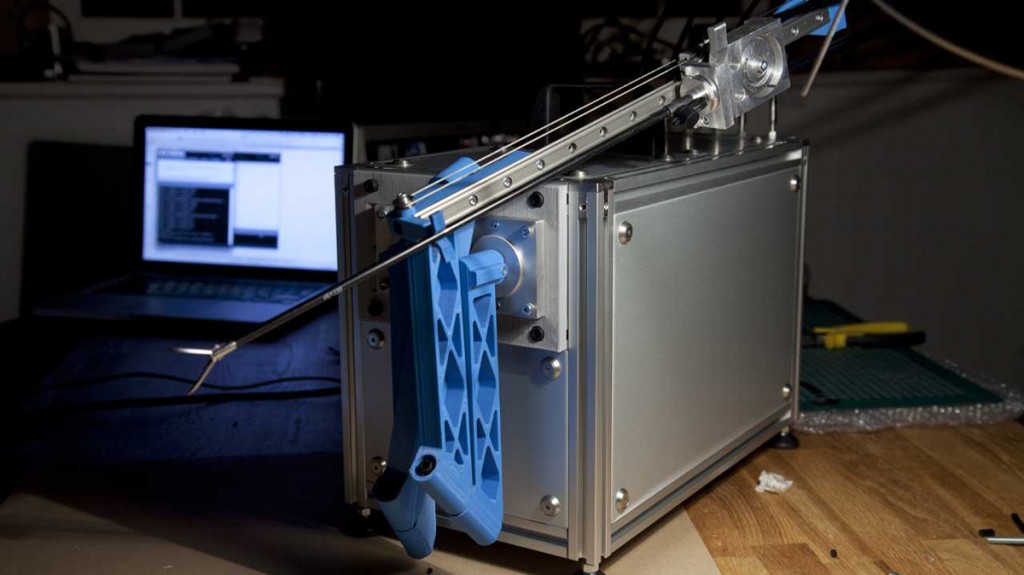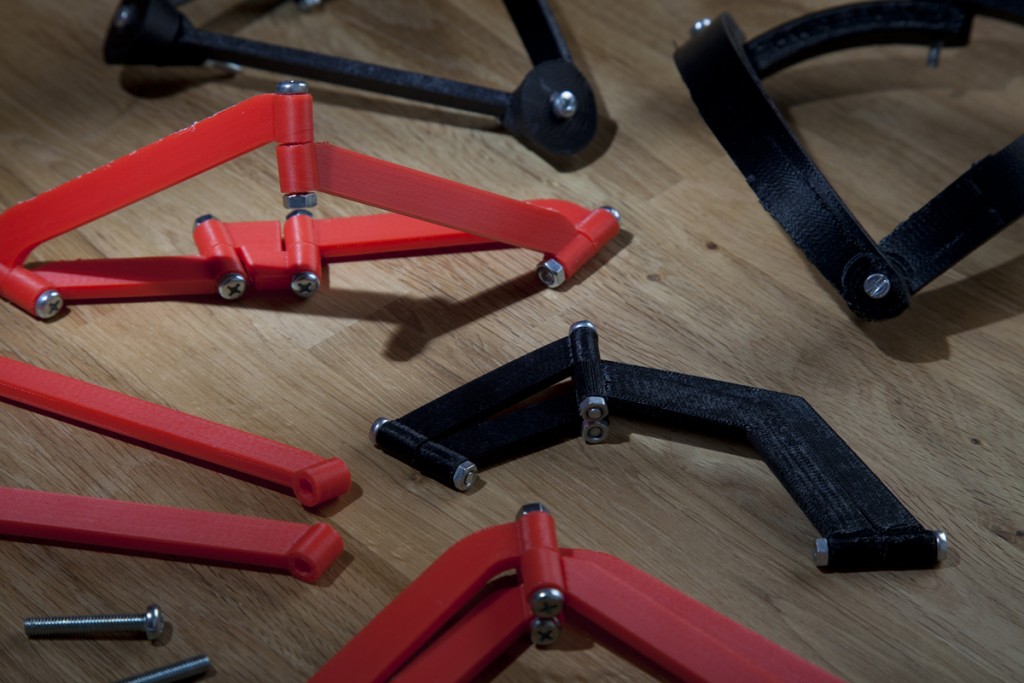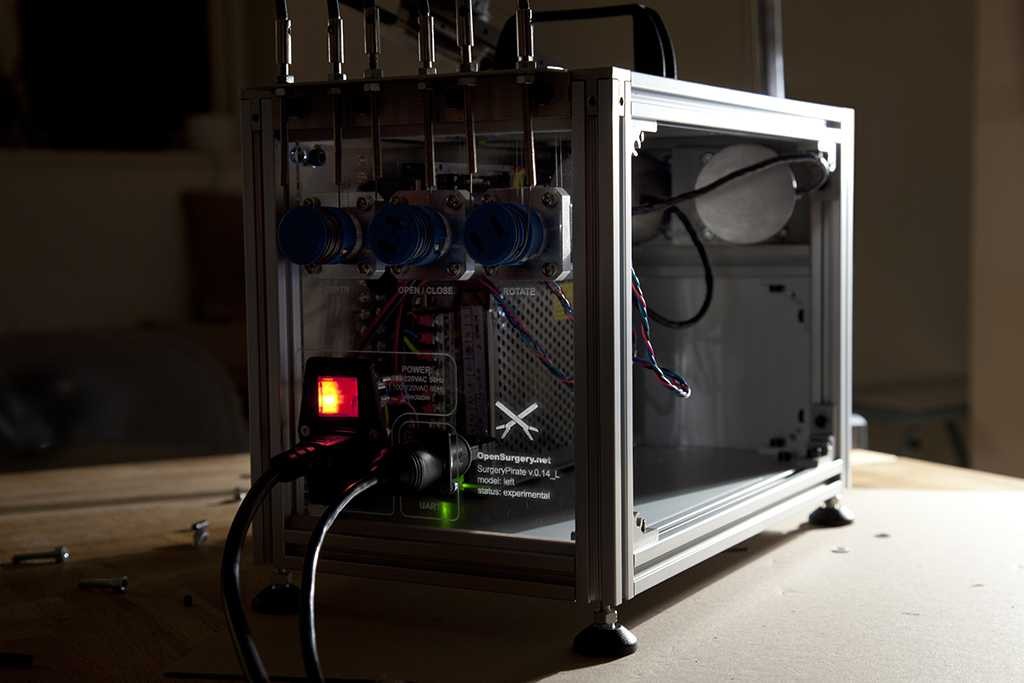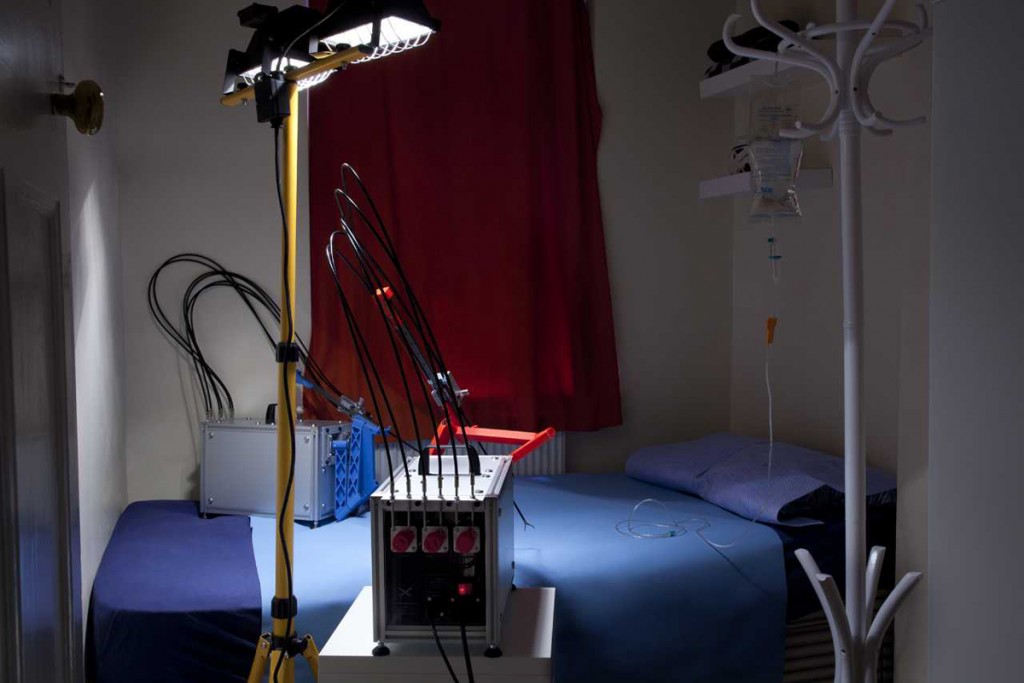Ultimately, the open source revolution and digital fabrication have the potential to give just about anyone the ability to make anything, regardless of background or experience. Even robotic surgeons, according to a recent Heise article. In order to bring down the cost of surgical robots, like laparoscopic machines, Frank Kolkman launched Open Surgery, an open source project to create a low-cost, open source, surgical robot.
On the Open Surgery site, Kolkman describes the development process behind the Surgery Pirate, his open source, laparoscopic robot. Taking a cue from the US military’s own open source device, the $200k RAVEN II Surgical robot, Kolkman sought to bring down this price significantly. Thinking that the biggest cost issue would be the actual surgical equipment, Kolkman turned to Alibaba, ordering sterile laparoscopic instruments, as well as peripheral components like camera modules and CO2 insufflation pumps, from Chinese manufacturers, all of which could, he reasons, be sterilized in a home oven or microwave. Then, it came time to design the mechanics of the bot itself, which he describes as the most difficult part of the process.
Kolkman relied on designs from the RepRap community to nail down the electronics for the Surgery Pirate, designing “four 3D printed parts controlled by two DC servo motors that rotate around a central pivotal point” and programming it with Processing’s open source platform. By using such designs, he believes that the community will, in turn, be able to improve the bot even further and help Kolkman along the way.
And, after five months, he achieved a rough prototype for a surgical robot, though he warns “I wouldn’t recommend to attempt surgery with it just yet,” adding, “The biggest limitation is that you would still require a trained surgeon, or someone with extensive knowledge of the human anatomy and knowledge of surgery, to perform the operation. However I don’t think it is to hard to imagine that there would be surgeons who share in the same ideology and become part of such communities. The legality of that however remains questionable and it’s preferability off course debatable.”
A quick visit to Open Surgery and you immediately see that Kolkman’s robot is clearly framed not as a device for actually performing surgeries, but is meant to be an act of sociopolitical commentary. Think Cody Wilson and the 3D printed Liberator gun, but with a constructive message. He eloquently laments the sometimes $2M cost of surgical robots, which have the ability to perform minute procedures with precision and reduce the trauma experienced by patients. Not only is this not cost effective for hospitals, which have to use the robots constantly to see a return, but such robots, Kolkman says, “[expand] the range of treatment options available to patients… by replacing lower cost options with higher-cost services.” He goes on to describe step-by-step tutorials on YouTube on how to perform some medical procedures at home, “Driven by the lack of affordable alternatives to the professional healthcare system, communities of mainly uninsured Americans use Youtube to share videos showing them performing medical hacks on themselves…”
In a separate post, he also draws attention to the issue of patents in the medical industry, which are notorious for driving up the costs of life-saving medications and technology. After pointing out the valid uses for patents, Kolkman explains, “However where intellectual property law begins to fail in my opinion is where large companies are monopolizing over extensive patent portfolios with very broadly defined patents on concepts and mechanisms. Especially within the medical sector this is painful, firstly because your are directly preventing certain groups of people from getting access to care that might save their life and secondly because a lot of healthcare related research is publicly funded. Meaning the government, and the tax payer, is initially taking most of the risk, for little return of the profit later on as companies have bought back their intellectual property and become privatized. Besides that the cost associated with patents means that it is difficult for startups who don’t have the capital yet to enter the medical market with revolutionary ideas, because even if they only marginally seem to infringe on often very broadly defined patents it becomes hard to get investment. So the challenge for innovation policy is to come up with a system that only pays for innovations that are worth it, but without shutting down the potential for disruptive new ideas to have a long-term effect. “
As much as Open Surgery is meant as a sociopolitical message, it is also clear that the Surgery Pirate is a sincere experiment by Kolkman, who really does believe that advanced medical equipment could be made open source in order to improve the technology and bring down its cost. And his argument is definitely an appealing one, as we’ve seen e-NABLE’s 3D printed prosthetics and Open Bionics’ bionic arms drive the cost of prosthetic limbs down by orders of magnitude. Why shouldn’t the same happen for surgical robots?
I guess the question may seem absurd at first, given the dangers of DIY surgery (the fatalities caused by DIY butt injections come to mind), as 3D printed prosthetics are far less likely to cause anyone harm. At the same time, one can begin to imagine a middle ground between anyone building surgical robots at home without safety regulations enforced and the closed model we have now, in which people are driven to such DIY procedures because of the high cost of medical care. Open source designs could bring down the cost of medical equipment and a new framework for regulating such devices might be enacted to also control their safety. And, in countries and legitimate clinics that can’t afford such high-cost equipment, these devices could be built and run by trained professionals in lieu of anything higher quality. Otherwise, we might be living in an even more dystopian world in which we really are turning to DIY robots in back alleys to get our medical needs met. Unless we’re already living in that world.







